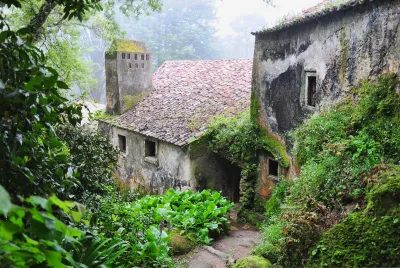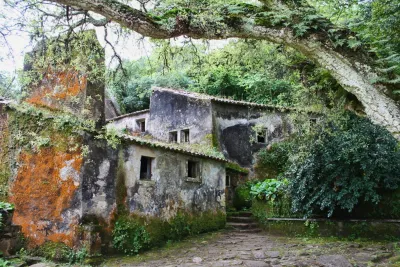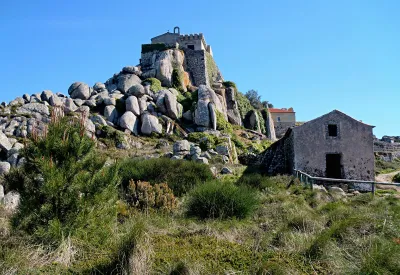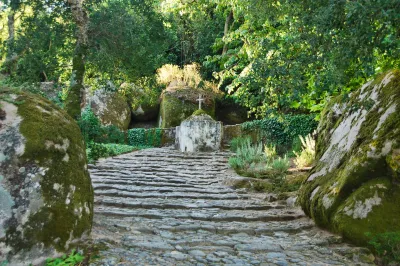
Convento dos Capuchos User:W.Rebel CC BY-SA
Convento dos Capuchos - Sintra Mangelbenito CC BY-SA
Convento dos Capuchos - Serra de Sintra Luis Cozeto CC BY-SA
Convento dos Capuchos Kačka a Ondra CC BY-SA
Kačka a Ondra User:W.Rebel CC BY-SAIf you’re looking to escape from Sintra's well-trodden tourist hotspots, and find a quiet, contemplative spot, this former monastery is just the spot. Almost hidden in a shroud of greenery, it gives a glimpse of the simple lifestyle of 16th century Franciscan monks and an opportunity to get away from it all.
The Convento dos Capuchos in the Serra de Sintra National Park was founded in 1560 and provided a place of retreat and penance. In the 1830's, anti-clerical reforms led to the banning of many Portuguese religious orders and their assets were confiscated. This lead to the monastery being abandoned only to be rediscovered as a tourist attraction nearly 200 years later.
Today, huge granite boulders, towering ancient oaks trees and overgrown shrubbery surround what remains of this historic site and the result is an atmospheric beauty spot where the ancient structures appear to blend perfectly with their natural surroundings.
Life for the eight monks living here must have been pretty austere, even by 16th century standards. It appears that the friars who lived here took their vow of poverty very seriously. The stone slabs on which they slept can still be seen and are clearly not long enough for an adult to stretch out on. Door frames are tiny, forcing those passing through to humbly bow down. In these cramped, simple dwellings the brothers had little protection from the elements.
Despite, or possibly because of these utilitarian living conditions, one of the occupants, Friar Honorio is said to have lived to the age of 100, apparently spending the last 30 years of his life in one tiny cramped hole, which can still be seen today. His penitential existence became well known moved none other than Lord Byron to write "Deep in yon cave Honorius long did dwell/In hope to merit heaven by making earth a hell."
Today, visitors can explore the chapels, one with faded frescos of Saints Francis and Anthony, or see the remains of the friars' simple cells, the courtyard and the former kitchen garden. Audio guides and guided tours are recommended to get the most out of your visit.
Getting here can be slightly challenging as there are no links to public transport of any kind. Just as it once was, this place remains a place of isolation and solitude.
Sintra2710-405Phone
+351 21 923 73 00Link
https://www.parquesdesintra.pt/en/parks-monuments/convent-of-the-capuchos/
Sintra travel guide »
Considered not only one of the wonders of Portugal but indeed of Europe, Sintra is truly a gem. Once the royal town of the country, it now deservedly holds UNESCO world heritage status and attracts hordes of visitors throughout the year. Its unusual geography, nestled in a stretch of hills surrounded on all sides by plain, estuary or ocean, and its subsequent climate, which is perhaps more…